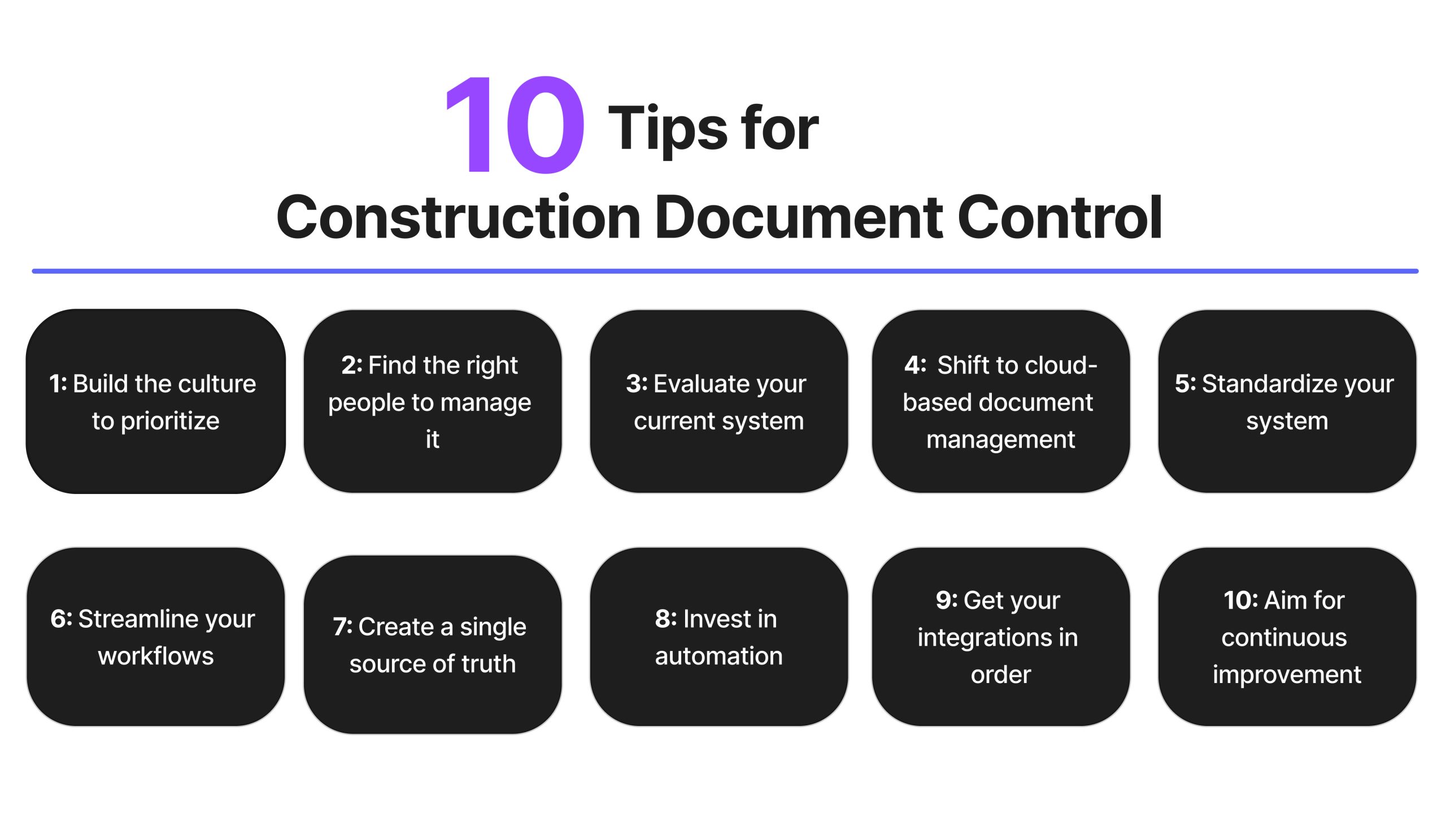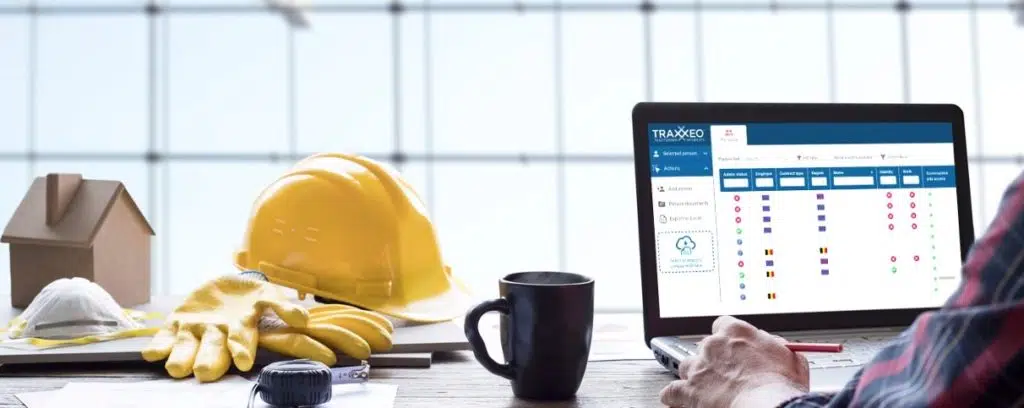Simplify Your Process: Construction Document Management Made Easy
Simplify Your Process: Construction Document Management Made Easy
Blog Article
Designer's Overview to Improving Construction File Monitoring for Efficient Job Implementation
In the intricate world of design and building, the reliable management of job paperwork stands as a cornerstone for success. Designers are charged with juggling a myriad of drawings, records, requirements, and agreements, all vital parts for bringing a task to fulfillment. However, the process of organizing, sharing, and maintaining these documents can typically end up being a maze of inadequacies and setbacks otherwise dealt with diligently. By discovering systematic techniques, cutting-edge tools, and market ideal methods, engineers can not just simplify their record monitoring procedures but also lead the way for a lot more effective job execution. Allow's navigate through the vital methods and services that can revolutionize just how designers handle construction documents, guaranteeing projects are supplied with precision and timeliness.
Importance of Effective Record Management
Why is reliable record monitoring crucial for architects in the construction industry? Efficient document management is important for architects in the construction industry as it plays a pivotal role in ensuring the effective implementation of jobs. Designers handle a large range of documents, varying from layout illustrations and specs to licenses and contracts. Proper organization and management of these documents are vital to preserve task timelines, make sure compliance with laws, and assist in efficient communication among task stakeholders.

Reliable record monitoring allows architects to gain access to essential information promptly, track project progression properly, and minimize dangers related to errors or omissions. By carrying out structured file management processes, architects can boost cooperation with customers, specialists, and other team participants, causing enhanced project end results and customer fulfillment.
Additionally, effective file monitoring assists designers preserve a detailed job background, allowing them to leverage past experiences and lessons found out for future projects. In today's fast-paced construction industry, where timely decision-making and details sharing are extremely important, efficient record administration is a foundation for success.
Approaches for Simplifying Record Company
Reliable record monitoring practices not just guarantee task success for designers in the building sector however additionally lay the foundation for applying techniques for simplifying document company. To streamline file company effectively, designers need to first develop a clear identifying convention for folders and documents. Consistency in calling files based on task phases, paper types, and pertinent information will facilitate easy retrieval and minimize complication.
Using cloud-based storage solutions can additionally boost record company by giving a central area for all project-related documents - construction document management. This permits staff member to access one of the most updated files from anywhere, promoting collaboration and efficiency. Implementing version control devices better improves record company by tracking modifications, stopping clashing edits, and guaranteeing that the most current versions are always readily available
In addition, developing a rational folder framework with assigned subfolders for different document categories, such as requirements, agreements, and drawings, can enhance file management procedures. Routinely evaluating and removing out-of-date or redundant data will aid maintain content a lean and well organized file database, eventually enhancing efficiency and project results.
Leveraging Technology Devices for Collaboration
In the world of modern-day architecture, engineers are significantly relying on innovative technology devices to cultivate smooth collaboration among project stakeholders. Cloud-based platforms such as BIM 360 and Procore allow real-time access to job records, making it possible for contractors, engineers, and customers to collaborate image source effectively no matter of their physical area.
Online design and construction (VDC) software program like Revit and AutoCAD Style allow architects to develop detailed 3D versions that can be shared and modified collaboratively. This real-time cooperation improves design control, visualization, and accuracy, resulting in far better decision-making throughout the job lifecycle. Additionally, interaction tools like Slack and Microsoft Teams give immediate messaging, file sharing, and video clip conferencing capabilities, cultivating smooth communication amongst team participants and stakeholders.
Making Sure Accuracy and Variation Control

Efficient version control also aids in managing paper approvals and making sure that only licensed employees make modifications. Designers ought to establish clear procedures for recording changes, consisting of timestamps and customer identification, to develop an audit trail for accountability. Frequently connecting with the job group about version updates and adjustments is necessary to stay clear of complication and keep alignment throughout the building and construction process.
Finest Practices for Record Sharing and Access
Having actually developed a robust system for version control in building record management, designers can currently concentrate on enhancing record sharing and access methods to improve partnership and performance among project stakeholders. Among the very best practices for efficient file sharing is to use cloud-based systems. These platforms use real-time accessibility to task papers, making it possible for employee to see, edit, and discuss data simultaneously. By centralizing files in a cloud atmosphere, designers can make sure that all stakeholders are dealing with one of the most current details.
Additionally, carrying out role-based gain access to control is vital for preserving data security while promoting cooperation. Designating different approval degrees to team participants makes sure that sensitive details is just available to accredited workers. On a regular basis updating accessibility authorizations based on task requirements and group modifications is crucial for keeping data honesty.
Integrating task administration software program with paper sharing platforms can likewise streamline operations. check my blog This integration enables seamless interaction, task monitoring, and document monitoring within a single user interface, minimizing the need to switch over between numerous devices. By complying with these ideal methods, architects can create a much more efficient and collective paper sharing setting, ultimately causing effective job implementation.

Final Thought
To conclude, efficient building and construction record administration is vital for successful project implementation. By applying methods for organization, leveraging technology devices for partnership, guaranteeing precision and version control, along with complying with finest techniques for document sharing and gain access to, designers can improve their operations and improve total project performance. Focusing on these aspects of paper management will certainly result in smoother project implementation and better results for all stakeholders involved.
Reliable document monitoring is necessary for architects in the building and construction industry as it plays an essential role in making sure the successful execution of tasks. construction document management. Proper company and management of these files are important to keep task timelines, guarantee conformity with policies, and promote effective interaction among task stakeholders
Efficient file monitoring practices not only make sure task success for architects in the building sector yet also lay the structure for applying strategies for enhancing record organization. One essential method is developing a central file database where all group participants can access the most recent versions of illustrations, specs, and various other project documents.Having actually established a robust system for version control in construction file administration, designers can now focus on enhancing paper sharing and gain access to techniques to improve partnership and effectiveness amongst job stakeholders.
Report this page